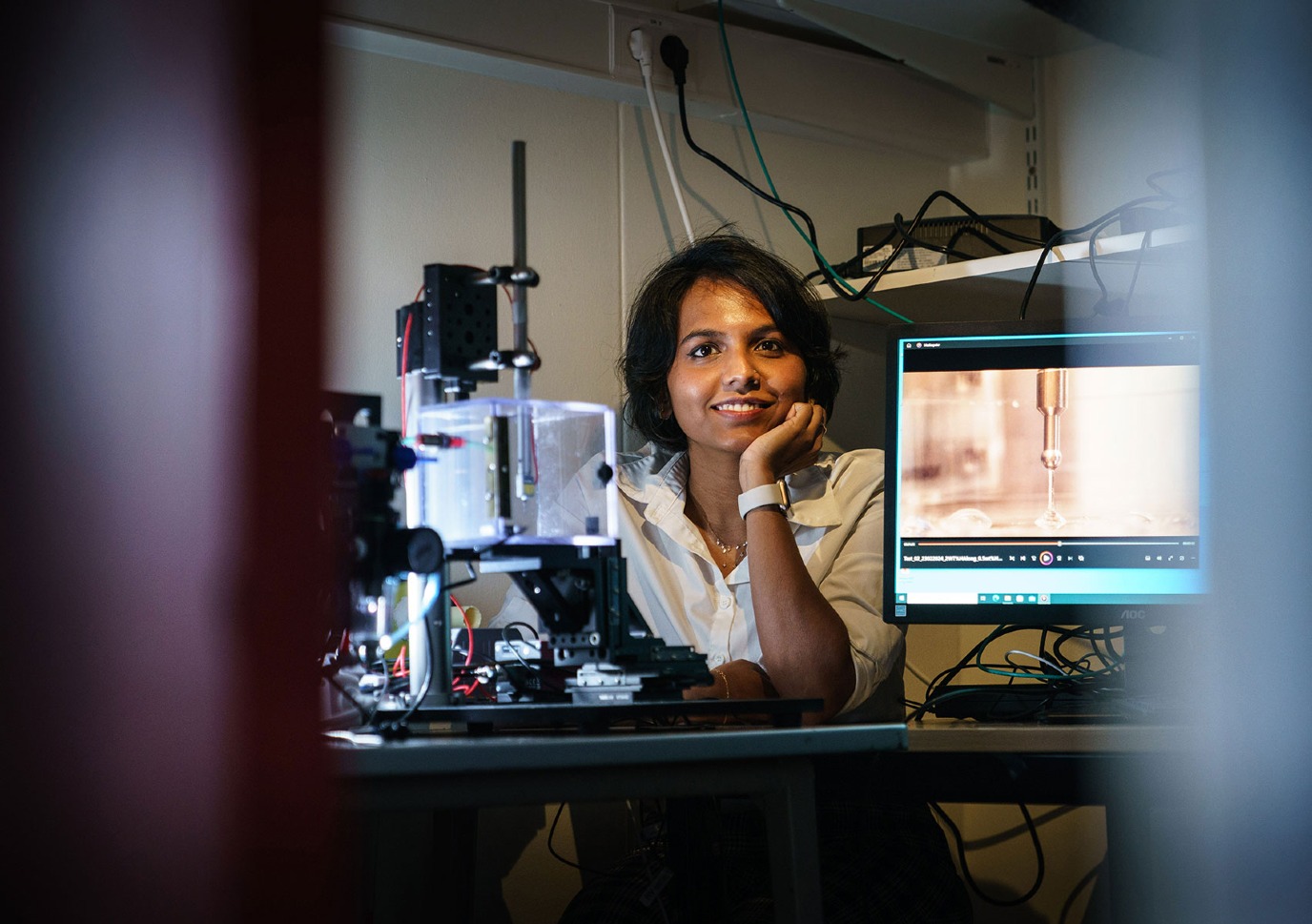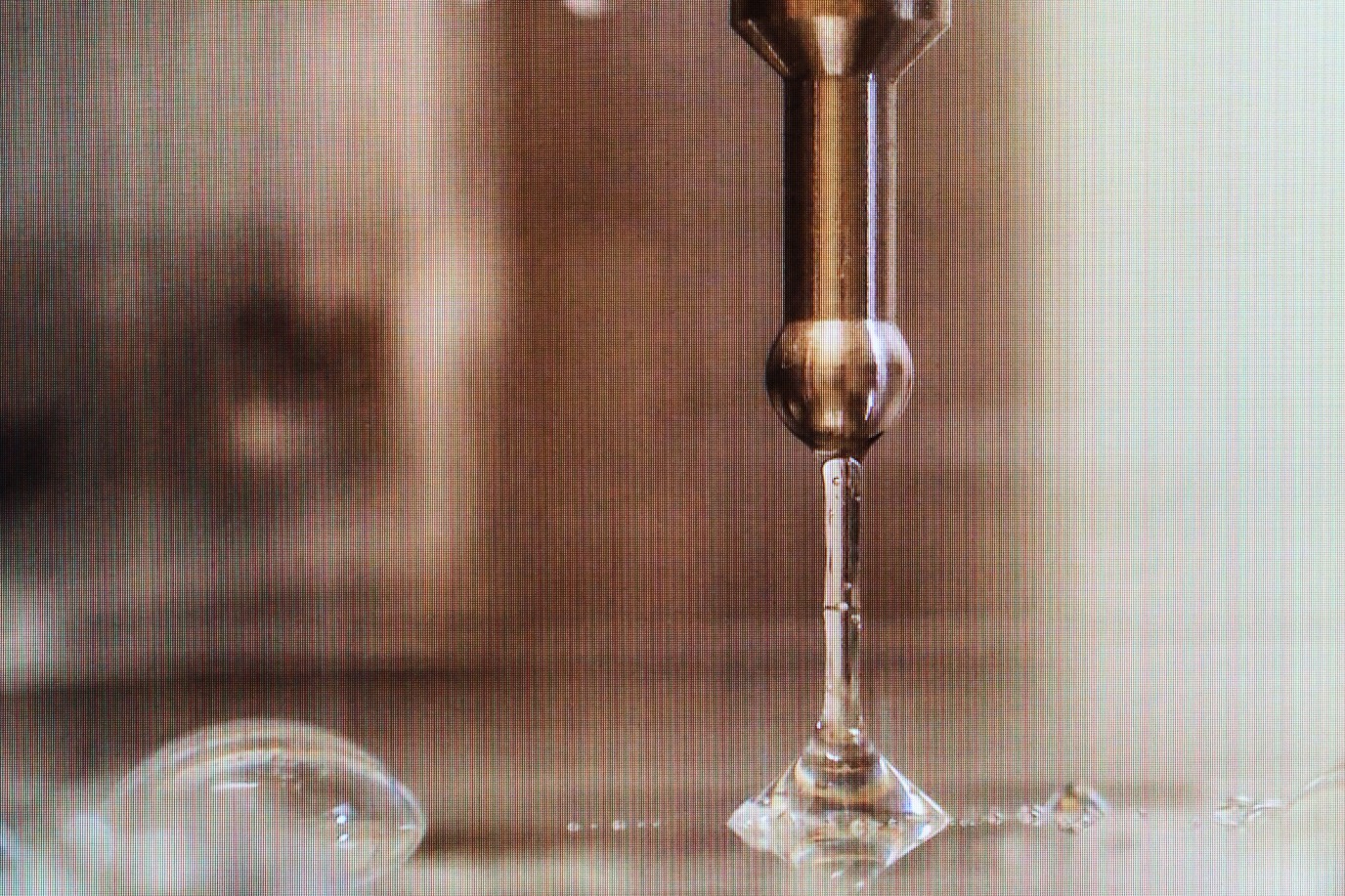Measuring stickiness
Several plant species, from the tomato to the carnivorous sundew, use tiny sticky droplets to attract and trap insects. These water-based droplets full of sticky molecules could form an ideal toxin-free insecticide that could be easily washed off of edible plants. PhD student Abinaya Arunachalam is trying to find the perfect recipe. But how do you measure the stickiness of different candidates? Arunachalam ended up building her own measuring tool to quantify stickiness.




She works in Marleen Kamperman’s research group, where nature-inspired adhesives are an important topic. ‘The sticky substances that plants use are based on sugars, but they are very complex, so we try to reduce the recipe to the key components.’ In order to test these recipes, Arunachalam needed a way to measure stickiness.
‘During the first few months, I used my finger to get a rough idea of the stickiness. But, eventually, our collaborators at Wageningen University came up with a design’, she explains. ‘It was our job to build it and to modify the design in the process.’ The instrument uses a small probe that you can dip into a droplet. The force required to pull the probe free is an indication of the stickiness of the droplet.
One of the first additions to the design was a humidifier: water evaporating from the droplets increases the concentration of sticky sugars. This is also a problem for the use of the ‘physical insecticide’ she is developing. ‘That is why, for now, we focus on pests in greenhouses, where humidity is regulated.’
Arunachalam is a chemical engineer by training, and she had to develop quite a few new skills to build and use the stickiness probe. ‘I had tremendous help from our lab technician, but over the years, I have increased my knowledge of electrical engineering and coding of software for the measuring tool. I am now able to identify and fix problems myself.’
Photos: Reyer Boxem
Text: FSE Science Newsroom | René Fransen
Every two weeks, UG Makers puts the spotlight on a researcher who has created something tangible, ranging from homemade measuring equipment for academic research to small or larger products that can change our daily lives. That is how UG researchers contribute to the solutions for big scientific and societal challenges.
For decades, engineering teaching and research at the UG has been part of a wide array of strong disciplines, and from a national point of view, our collaboration with the four technical universities is becoming more and more intensive.
Previous portraits of Makers can be found on the overview page .
More information
Abinaya Arunachalam
| Last modified: | 26 June 2024 09.58 a.m. |
More news
-
03 April 2025
IMChip and MimeCure in top 10 of the national Academic Startup Competition
Prof. Tamalika Banerjee’s startup IMChip and Prof. Erik Frijlink and Dr. Luke van der Koog’s startup MimeCure have made it into the top 10 of the national Academic Startup Competition.
-
01 April 2025
NSC’s electoral reform plan may have unwanted consequences
The new voting system, proposed by minister Uitermark, could jeopardize the fundamental principle of proportional representation, says Davide Grossi, Professor of Collective Decision Making and Computation at the University of Groningen
-
01 April 2025
'Diversity leads to better science'
In addition to her biological research on ageing, Hannah Dugdale also studies disparities relating to diversity in science. Thanks to the latter, she is one of the two 2024 laureates of the Athena Award, an NWO prize for successful and inspiring...
